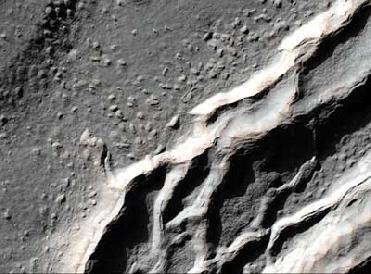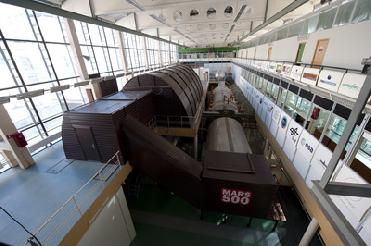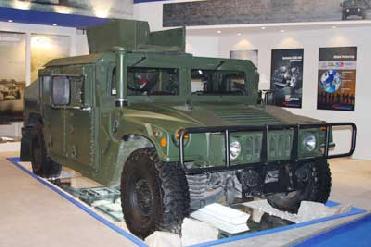
The Hellas Basin crater captured by Mars Reconnaissance Orbiter. A NASA photo
WASHINGTON (BNS): A closer look of Mars by NASA’s Mars Reconnaissance Orbiter (MRO) has thrown light on the varied featured of the Martian surface ranging from oddly sculpted terrain inside a giant crater to frosted dunes, deformed craters, old gullies and pits strung along fractured ground.
The MRO's High Resolution Imaging Science Experiment (HiRISE) orbiting camera has captured the new images of Mars on March 28, 2010.
One of the images is that of the Hellas Basin, a large crater on southern Mars. With a diameter of about 2,200 kilometers and a depth reaching the lowest elevations on Mars, Hellas is one of the largest impact craters in the Solar System.
An area in this huge crater bears unusual features and is filled with "material”.
This may be related to volcanic activity on the northwestern rim of Hellas. However, it might also be related to water and water ice. There is evidence elsewhere that the ground here is ice-rich, NASA said.
The MRO camera will detect the new-found feature in greater detail when Hellas Basin is free from atmospheric dust, the space agency said.
 Previous Article
Previous Article Next Article
Next Article













The Indian Air Force, in its flight trials evaluation report submitted before the Defence Ministry l..
view articleAn insight into the Medium Multi-Role Combat Aircraft competition...
view articleSky enthusiasts can now spot the International Space Station (ISS) commanded by Indian-American astr..
view article